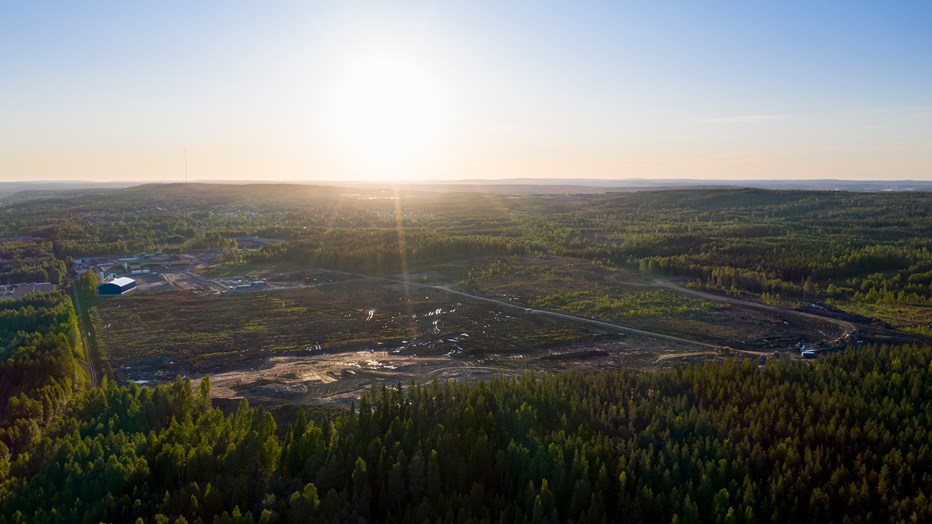Our most sustainable development project
Skellefteå Site East is a development project for new industrial plots that Skanska runs on behalf of Skellefteå Municipality. Conditions are created to meet the demand for new and sustainable industrial land in Skellefteå. We want to make it possible for companies in energy-intensive industries to establish themselves here and contribute to strengthening Skellefteå's development and business life. Our goal is to create the most sustainable development project ever.
Plots ready in 2022
Skellefteå Site East covers 45 hectares and is located in Hedensbyn just a few kilometers outside Skellefteå's city center. The new industrial sites will be ready for establishment at the beginning of 2022. We hope that Skellefteå Site East will attract energy-intensive industries that value sustainability.
Skanska started with the project planning in June 2019. The first phase included deforestation, detailed planning and calculation as a basis for continued work.
Phase 2 started in the spring of 2020, and included soil preparation, connecting streets, lighting, water and sewage as well as electricity and fiber to the area.
Ecological, social and economic perspectives
Parallel to working with project planning in phase 1, we developed a sustainability program focused on three sustainability aspects; economic, ecological and social.
Great focus is of course on the climate aspect where every detail of the project must be optimized from a climate perspective. We also emphasize social aspects; for example we create green recreational areas and places for spontaneous meetings. We create employment opportunities for people outside the labor market by offering internships and using Solkraft, a unit within Skellefteå Municipality.
Climate calculation
All work is based on a climate calculation that provides an overview of the project's climate impact during the construction phase in the form of carbon dioxide emissions and other greenhouse gases. The calculation shows how different materials and working methods affect greenhouse gas emissions. Together with the economic calculation, decisions can be made on measures where we take into account both the economy and the climate impact.
Circular mindset
The construction work is carried out with smart and sustainable mass management, enabling us to maintain a good economy while caring for the climate. The way of thinking is circular and we work hard to reuse what the area has to offer.
For example, tree stumps are seen as a resource instead of a waste, removed vegetation is reused as building material, sand and gravel are sorted and reused as backfill material. Moraine is used as filling material, and rock that is excavated is crushed and reused. All workplace vehicles are powered by electricity or HVO.
Our goal is to create conditions for plot owners to use sustainable energy alternatives such as district heating, district cooling, snow cooling and solar cells.
The development project includes:
- Removal of 33,500 tree stumps.
- Removal of 33,500 tree stumps.
- 90,000 cubic meters of masses (removed vegetation). This is the equivalent to approximately 3,900 trucks with trailers.
- Rock excavation of approximately 760,000 tonnes. This is the equivalent to 4,800 Boeing 747 aircrafts.
- Earth excavation of approximately 190,000 cubic meters, which is the equivalent to 9,300 trucks with trailers.
- Filling of various materials in the area: approximately 560,000 cubic meters, which is the equivalent to 30,000 trucks with trailers.
- 1,335 kilometers of water pipes, 1,270 meters of stormwater pipes and 1,310 meters of sewage water pipes.

